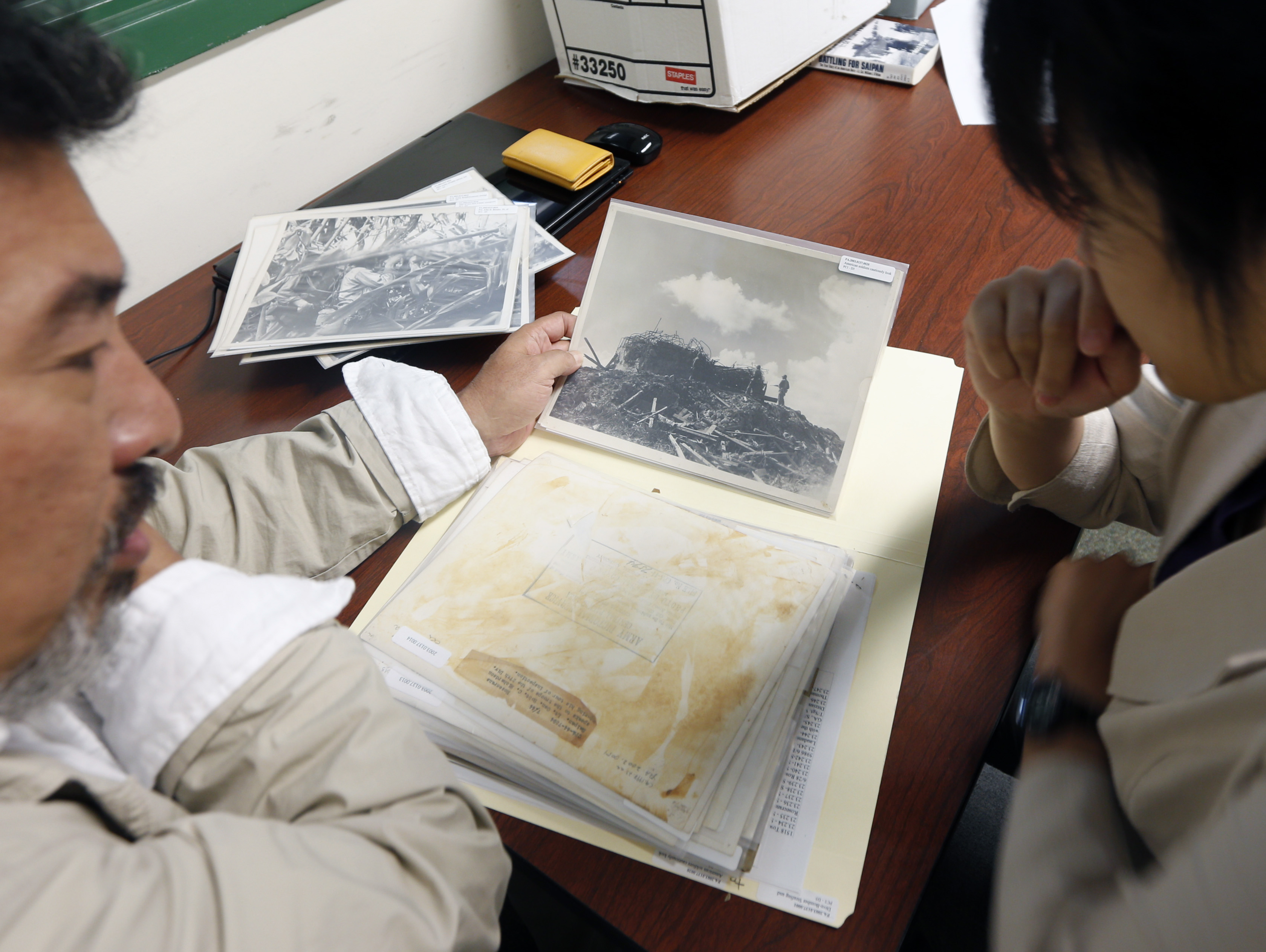SARATOGA SPRINGS, N.Y. - Racing against time, members of a Japanese organization are combing a New York military museum's World War II records for information they hope will lead to the graves of American servicemen still listed as missing in action on Saipan.
The reason for the urgency: A developer plans to begin construction in the fall on a condominium near the beach where scores of Americans were killed on July 7, 1944, during Japan's largest mass suicide attack of the war.
Kuentai-Japan, a nonprofit group that searches Pacific islands for Japan's war dead, found the remains of at least two American fighting men near the construction site in 2011 and 2013, and believes as many as 16 others are buried nearby. This April, Kuentai-Japan formed a sister organization, Kuentai-USA.
"This is urgent," said Kuentai founder Usan Kurata, a 58-year-old journalist who is visiting the New York State Military Museum this week with another group leader, both from Kyoto. He said the Japanese organization believes that returning Americans' remains to their families is the right thing to do.
The Pentagon agency in charge of searching foreign battlefields for America's dead says about 20 U.S. servicemen are unaccounted for on Saipan, part of the Northern Mariana Islands, a U.S. commonwealth 1,400 miles from Japan.
Maj. Jamie Dobson, a spokeswoman for the Hawaii-based U.S. Joint POW-MIA Accounting Command, said that developers must follow Saipan's stringent historic preservation laws and that if a probable burial site is found to be in imminent danger, the U.S. will send a recovery team.
Kuentai said it has an agreement with the Russian developer of the condo project to excavate the property for remains, but the group is still awaiting final approval from local authorities.
The researchers' visit to the U.S. comes 70 years after more than 3,000 Japanese troops launched the assault that killed or wounded more than 900 soldiers in the Army's 105th Regiment, part of the 27th Infantry Division, a former New York National Guard unit.
Many of the Americans killed in the "banzai" attack were from New York state. The museum holds many of the 27th Division's records, including enlistment cards, rosters, regimental yearbooks, photographs and other documents.
Using battlefield photos published in Life magazine in August 1944 and military maps at the National Archives in Washington, Kuentai located a mass grave containing the skeletal remains of nearly 800 Japanese troops. The bones were cremated and the ashes brought back to Japan for burial.
During its excavations, the group also discovered the remains of five probable American soldiers. JPAC said two have been identified so far as MIAs from the 105th Regiment, and they were returned for burial in their home states of Kentucky and Pennsylvania.
JPAC and the Defense Department's other casualty accounting agency, the Defense POW-MIA Office, are the subject of a Pentagon inspector general's investigation of potential fraud and waste.

